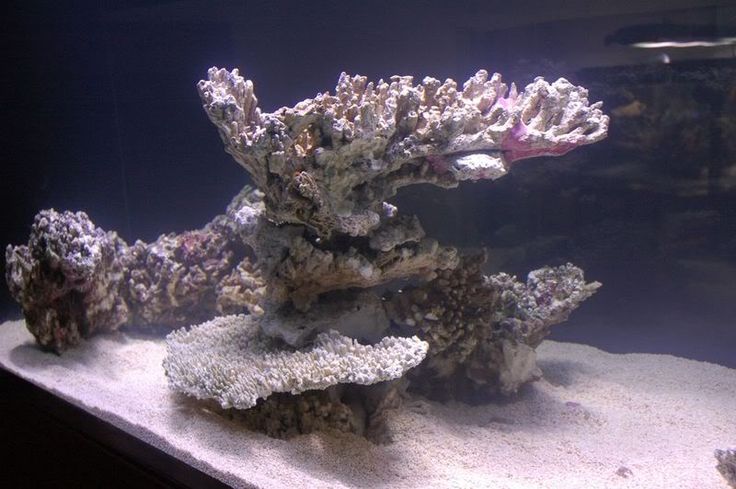Setting up a live coral aquarium tank can be challenging and fun, however the real rewards come when you get to see a fully stocked and thriving reef aquarium that you created! The question that many new reef keepers have is, "How Do I Stock A Live Coral Reef Aquarium?" Here are some simple steps to follow to help ensure success when setting up your reef tank.
|
CURE THE LIVE ROCK:
Do this to make sure that any organisms that died on the rock while in transit have a chance to be broken down and removed from the rock so that it doesn't pollute your reef. It is best to do this in a separate container if you have one, but it can be done in the display tank as well.
|

|
|
CREATE YOUR AQUASCAPE:
Add sand and the cured live rock to your display tank and arrange the rock in a thoughtful manner. AquaStik Putty can come in very handy for this. Try to keep in mind what type of corals you want to place in your tank and how much room they will need to grow. Be sure leave open space between rocks for fish to swim and for water pumps to circulate the water. Also keep in mind that you will need proper clearance inside the tank to perform cleaning and maintenance tasks such as scraping the algae.
|
 |
|
BOOST THE BACTERIA:
Add a bacteria culture booster such as Brightwell MicroBacter7 or Continuum BacterGen M. This beneficial bacteria is essential to help break down fish waste and to prevent nitrate or ammonia spikes when adding live stock to your reef aquarium. This step is especially important if you are starting with dry rock.
|
 |
|
TEST YOUR WATER:
You should have both a saltwater and a reef aquarium test kit on hand and perform weekly tests of essential parameters until water chemistry has stabilized to the point that it can support marine life. Multi-test kits are available from Triton USA, Red Sea, API, SeaChem and individual, specialized test kits are offered by Red Sea, SeaChem and Elos. It is also recommended that you have a salinity refractometer or a hydrometer to monitor how salty the water is, and a reliable thermometer to monitor temperature.
|
 |
|
HIRE A CLEANING CREW:
Once your water chemistry has stabilized (especially Ammonia & Nitrite at ZERO), you can slowly start to add live stock to your reef aquarium. It is recommended that you start with a "Cleaning Crew"; an assortment of hermit crabs, snails, sand sifting starfish and other detritus eaters that will help keep your reef clean. You can also start to add a few fish (not too many), preferably of a hardy stock. This will help to keep the water chemistry stable as your reef tank matures. If you need help on selecting compatible reef invertebrates and reef fishes, there are some excellent guide books to help you choose the right specimen for your tank.
|
 |
COLOR UP YOUR REEF:
Now is the time to start adding corals to your reef aquarium. Start slowly with some hardy corals and be sure to maintain a regular weekly water testing schedule to ensure that water chemistry is within acceptable limits to support corals. As you gradually add corals and fish to your tank, you will find that you will most likely need to add supplements to replace those being used by the corals. These include Calcium, Strontium, Magnesium and Trace Elements. Be careful not to over or under dose the tank, regular testing and following manufacturers guidelines will ensure success. Also, be sure to select food that is appropriate for the type of corals and fish that you are keeping, and maintain a consistent feeding schedule (do not over feed). Patience is the key, do not add too many new specimen at once, as you could overload the bio-capacity of your reef. Only add a few new items at any given time, make sure you acclimate properly, and allow at least 1- 2 weeks before adding any other specimen.







